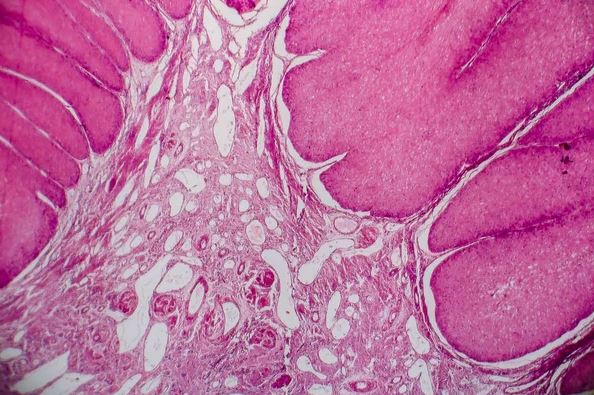
Introduction: High-grade squamous intraepithelial lesion (HSIL)
High-grade squamous intraepithelial lesion (HSIL) is a term used to describe abnormal cells that are found in the lining of the cervix, the lower part of the uterus that connects to the vagina. These abnormal cells are also referred to as cervical intraepithelial neoplasia (CIN) 2 or 3
Risk Factors: HSIL
HSIL is caused by a persistent infection with certain types of human papillomavirus (HPV), which is a sexually transmitted infection. Other risk factors for HSIL include having multiple sexual partners, smoking, and having a weakened immune system.
Screening: HSIL
HSIL is usually found during a routine Pap test, which is a screening test for abnormal cells in the cervix. The Pap test involves collecting a sample of cells from the cervix and examining them under a microscope. It is important to get regular Pap tests to screen for HSIL and other abnormal cells in the cervix.
Diagnosis: HSIL
If HSIL is found during a Pap test, further testing is usually needed to confirm the diagnosis. This may include additional laboratory tests or a procedure called a colposcopy, in which a magnifying instrument is used to examine the cervix more closely.
Treatment for HSIL
Treatment for HSIL may include cryotherapy (freezing the abnormal cells), laser therapy, or a procedure called a LEEP (loop electrosurgical excision procedure), which removes the abnormal cells using an electrical current. In some cases, a cone biopsy or hysterectomy (removal of the uterus) may be necessary.
The Importance of Regular Pap Tests in Detecting HSIL
The Pap test, also known as a Pap smear, is a simple and quick procedure that screens for abnormal cells in the cervix, the lower part of the uterus that connects to the vagina. The test involves collecting a sample of cells from the cervix and examining them under a microscope to look for any abnormalities.
High-grade squamous intraepithelial lesion (HSIL) is a type of abnormal cell that can be found during a Pap test. HSIL is a serious condition because it is a precursor to cervical cancer. It is caused by a persistent infection with certain types of human papillomavirus (HPV), which is a sexually transmitted infection. The presence of HPV can cause the cells of the cervix to change and become abnormal.
Getting regular Pap tests is important because it allows for the early detection of HSIL and other abnormal cells in the cervix. This can help catch any potential problems early and allow for prompt treatment, which can help prevent the development of cervical cancer. The American College of Obstetricians and Gynecologists recommends that women start getting Pap tests at age 21 and continue to get them every 3 years until age 29. After age 30, women can continue to get Pap tests every 3 years, or they can switch to getting Pap tests and HPV tests every 5 years.
Preventing the Development of Cervical Cancer: A Guide to HSIL Management
The Pap test, also known as a Pap smear, is a simple and quick procedure that screens for abnormal cells in the cervix, the lower part of the uterus that connects to the vagina. The test involves collecting a sample of cells from the cervix and examining them under a microscope to look for any abnormalities.
High-grade squamous intraepithelial lesion (HSIL) is a type of abnormal cell that can be found during a Pap test. HSIL is a serious condition because it is a precursor to cervical cancer. It is caused by a persistent infection with certain types of human papillomavirus (HPV), which is a sexually transmitted infection. The presence of HPV can cause the cells of the cervix to change and become abnormal.
Getting regular Pap tests is important because it allows for the early detection of HSIL and other abnormal cells in the cervix. This can help catch any potential problems early and allow for prompt treatment, which can help prevent the development of cervical cancer. The American College of Obstetricians and Gynecologists recommends that women start getting Pap tests at age 21 and continue to get them every 3 years until age 29. After age 30, women can continue to get Pap tests every 3 years, or they can switch to getting Pap tests and HPV tests every 5 years.
